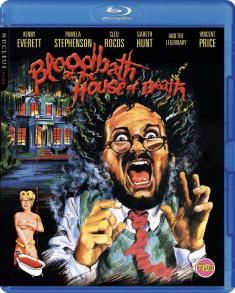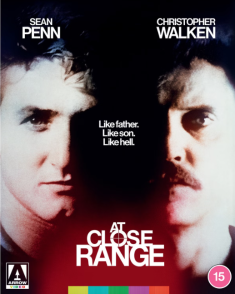Uncharted: Golden Abyss
Overview -
Announced before the kickoff of E3 2011, Uncharted: Golden Abyss is the first game from the Uncharted series to land on a mobile platform. However, Naughty Dog didn’t develop the Vita title as that baton was passed to Oregon-based Bend Studio. Released at the launch of the PlayStation Vita, the fourth entry into the franchise once again puts the player into the shoes of risk-taker Nathan Drake. Designed to fill in the gaps between the flashbacks during Uncharted 3: Drake’s Deception and the first game in the series Uncharted: Drake’s Fortune, Drake is tearing through the jungles of Central America to discover the 400-year-old secret behind a horrific massacre of a Spanish expedition.
While Sully (Victor Sullivan) doesn’t play much of a role in this tale, Drake gets a new female lead to flirt with by the name of Marisa Chase (voiced by Step by Step actress Christine Lakin) who happens to be searching for a missing archeologist (also her grandfather) that went missing in the ruins. Drake is also teaming up with Jason Dante (voiced by SOCOM voice actor Jason Spisak), a shady, fellow treasure hunter who also happens to know Sully. There’s even a retired, somewhat crazy general thrown into the mix, thus everyone is competing to reach the ruins before the other characters.
Video Review
This first generation Vita game looks very similar to the game that started it all on the PlayStation 3, Uncharted: Drake’s Fortune. The expansive jungle landscapes are lush with digital vegetation and the developers do a great job with water effects in the form of rushing, white waterfalls. However, as the entire game takes place in Central America, there’s nothing beyond the jungle to see as Drake’s globetrotting days hadn’t begun yet. Cutscenes definitely look great and the character animations are spot on compared to previous games in the series.
Technically speaking, the majority of the launch titles (including Golden Abyss) were developed at 720x408 resolution and up-scaled to the 960x544 resolution of the Vita screen. While this is less noticeable to Vita owners due to the high pixel density of the screen, you can still see aliasing issues (jaggies) as well as the occasional pixilated texture when playing the game. In addition, the game suffers from the occasional frame-rate issue during the latter stages of the narrative. Specifically, the game dips when the screen becomes populated with too many enemies, typically more than three to four. I’m curious if Bend Studio simply ran out of time when developing the first generation title or this is an early indication of the Vita’s limitations.
Audio Review
Nolan North returns to voice the character of Nathan Drake and pulls off an admirable job, despite the weaker script from Bend Studio. His typically witty quips aren’t as effective and sound contrived due to the lackluster writing. Lakin and Spisak also do a solid job with voicing the characters of Chase and Dante respectively. It’s just a shame that Bend Studio’s writers weren’t able to hit the same level of quality writing as Naughty Dog. Alternatively, the sound effects are definitely of Naughty Dog caliber, likely reused from a jungle sequence in a previous game. In addition, the familiar Uncharted soundtrack really gets the excitement going during the larger set pieces.
Uncharted: Golden Abyss definitely doesn’t live up to the standards of a typical Uncharted game. It feels like Sony and Bend Studio tried to stuff as many ‘proof-of-concept’ touchscreen actions into the game at the expense of pacing and narrative. It’s as if Sony’s treating all new Vita owners like a giant focus group while they try to figure out what works and what doesn’t. Unfortunately, this strange amalgamation of the franchise we love and stilted touchscreen actions / mini-games shove Golden Abyss into fourth place behind all other Uncharted games.
However, if you can look past the poor touchscreen ideas, there is an entertaining tale hidden within the launch title. Even with the weaker writing, there are key moments in the game that suck you into the narrative and really hit those scripted high notes during the crescendo of the on-screen action. Bend Studio has also nailed shooting controls with the accelerometer’s tilt-based aiming as well as using the rear panel control. Any developer currently creating a shooter for the Vita should look at this model for future games.
Sony has obviously positioned Uncharted: Golden Abyss as the system seller due to the popularity of the series. Is it the best game a new Vita owner can pick up at launch? No, but it’s probably in the top 5. Is it worth playing at some point? Yes, especially if you are an Uncharted fan. Is it worth the $50 MSRP? No, mostly due to the touchscreen silliness, lack of multiplayer, graphical issues and weaker writing. While it’s definitely too long of a game to beat in a single rental period, look to pick up Uncharted: Golden Abyss once it hits the $25 to $35 price range.












